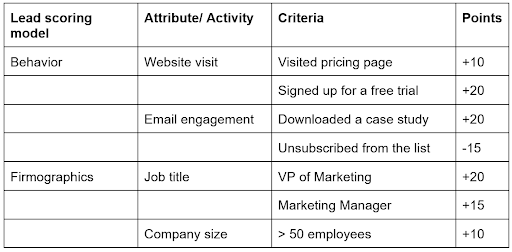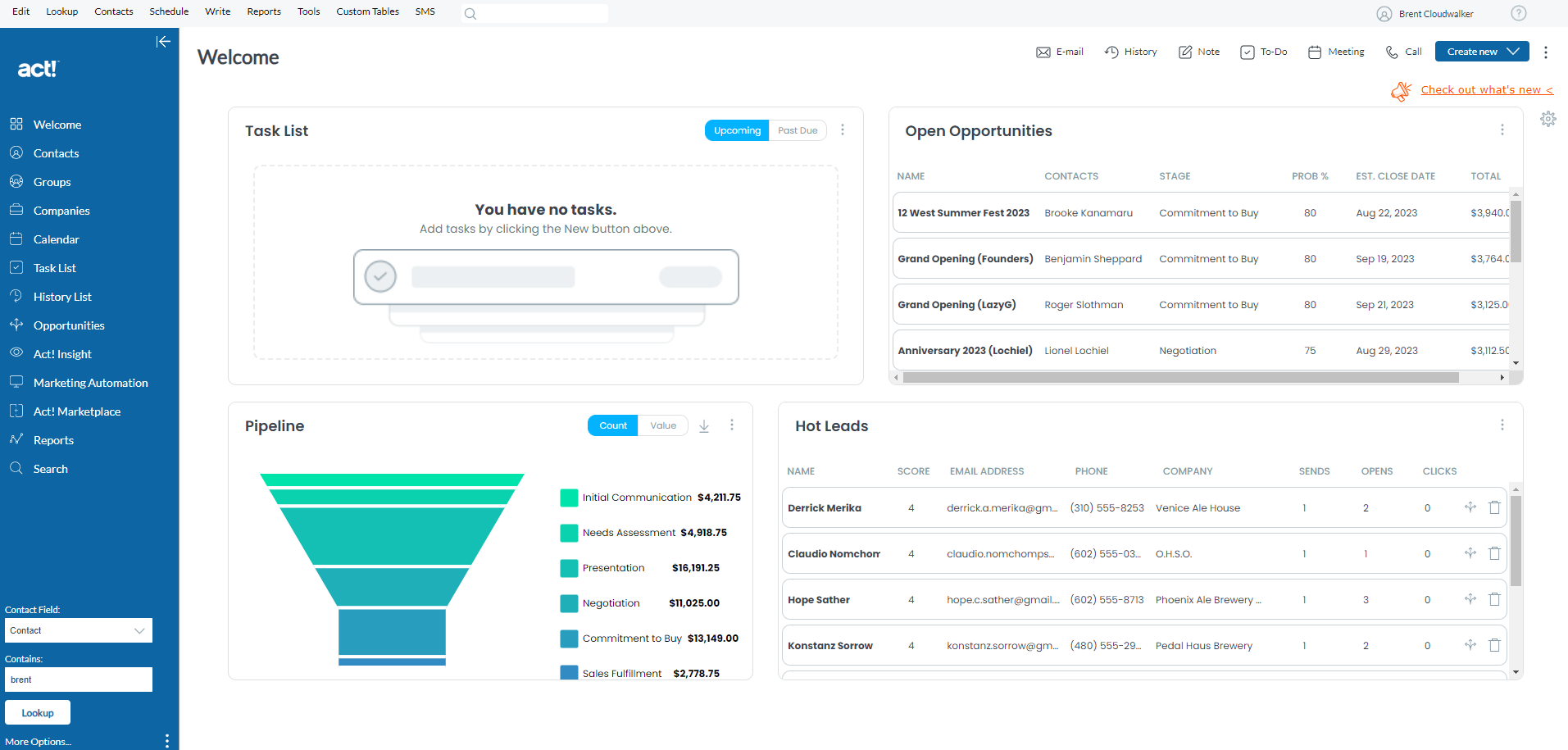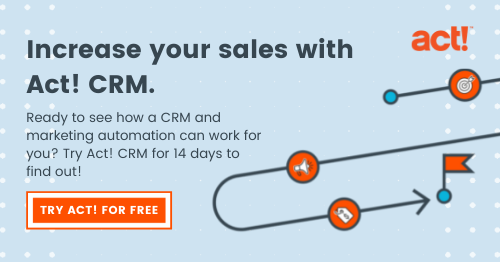
A sales funnel flooded with tons of leads—it’s a cherished dream that unites marketing and sales teams. It isn’t surprising that 68 percent of marketers use lead scoring and generation as a metric to assess the effectiveness of their campaigns. The more leads in your sales pipeline, the higher the likelihood of closing deals and generating revenue.
But is it enough for your marketing efforts to attract prospects with glitzy marketing campaigns designed to generate leads? During your sales cycle, if you struggle to convert these leads into paying customers, even the most populated sales funnel won’t yield the desired results.
That’s where lead scoring comes in.
Let’s take a closer look at how sales lead scoring works and how it can help you improve conversion rates.
What is lead scoring?
Lead scoring can help you determine the quality or lead qualification of each lead and its readiness to purchase from you. In other words, it can help you identify and nurture the best leads who have the greatest potential to become high-value customers.
This data-driven approach is critical because not every lead who enters your sales funnel is looking to buy from you right away, and lead scoring helps you identify the prospects who deserve your attention. It’s a methodology of assigning points (usually between 0 and 100) to leads based on their likelihood of buying from you. The higher the score, the more likely they are to convert.
You can use various attributes or data points to assign scores to your leads, and we’ll go into this in more detail in the next sections.

Why lead scoring is important
The most obvious advantage of adopting a lead scoring system in your marketing strategy is that it helps you prioritize leads. You can identify prospects with the highest likelihood of converting and use the right strategies to nudge them toward a sale.
It also eliminates the need to engage with low-quality leads who have no intention of buying. When your sales reps aren’t chasing such leads, they can focus on more important tasks, such as refining the sales process.
You can even personalize the customer experience based on lead scores as they help you understand where a potential customer is in their buying journey.
For instance, leads with scores below a specific threshold (but not too low) might be looking at different options. In that case, getting on a phone call and pushing them to close a sale will backfire. However, providing the right educational materials like whitepapers can do the trick.
What’s more? With lead scoring, you can identify marketing channels that generate high-quality leads and adjust your efforts accordingly. It helps boost the return on investment (ROI) of your campaigns and keeps marketing and sales teams on the same page.
Key factors to determine lead quality
The lead scoring process is a way to determine the quality of leads you get from various marketing campaigns. But before you start scoring new leads, it’s a good idea to understand what makes a high-quality lead.
In simple terms, a high-quality lead is one that fits your target audience or buyer persona. You can assess the quality of your leads based on the following parameters:
- Demographic data (geographic location and preferred language)
- Firmographic data (company size, job title, annual revenue, and industry)
- Behavioral data (number of visits to the pricing page, gated content downloads, number of emails opened, attending a webinar, social media engagement, or requesting a demo)
Understanding the defining parameters of a quality lead will help you assign relevant point values and build a more accurate scoring system.
How to get lead scoring right

You need a well-defined strategy to assign scores to leads and analyze their quality. It typically involves the following steps:
Outline an ideal customer profile
Before building your lead scoring system, you need to understand what your ideal customer looks like. Analyzing your existing customer base comes in handy here. You can identify the most common job titles, industries, locations, company size, and other demographic parameters.
This step is especially simple when you use a CRM platform like Act! CRM. Act! provides you with a centralized database to collect and analyze customer data, including their purchase history, customer service interactions, and online behavior.
Many CRMs also support integration with analytics tools to help you monitor customer behavior across different channels. This helps you build a more holistic view of your ideal customer.
Talk to your sales team and customers
CRM data gives you insight into the attributes and behaviors associated with a higher probability of conversion. You can take things up a notch by talking to sales reps and managers.
Sales team members interact with customers and have a better idea of what drives conversions. For instance, they might have realized that leads who read a particular case study on your website purchase within the next two days.
By the end of this step, you should have a complete picture of the various touch points customers go through during their buying journey.
Build your lead-scoring system
It’s now time to select activities, behaviors, and traits that play a crucial role in driving conversion. Once selected, allocate points to each criterion depending on how important it is to your customer journey. You can also assign negative points for attributes that indicate low purchase intent.
Here’s what a simple lead-scoring system might look like:

Measure lead quality
How do you measure the quality of leads that enter the sales funnel? Once you have a lead scoring system in place, the process is pretty straightforward.
All you have to do is rate the potential customers on the different criteria you defined in the previous step. A robust CRM platform like Act! CRM comes in handy here. It provides you with detailed customer profiles, complete with their demographic information, firmographic data, and buying behavior.
Many CRM systems also offer predictive lead-scoring tools that automatically allocate points. These tools use machine learning algorithms to analyze past customer behavior and calculate their likelihood of conversion.
Alternatively, you can use dedicated lead-scoring tools that integrate with your existing CRM solution, removing the trouble of manually scoring every lead.
Define the next steps
Allocating scores based on predefined criteria will give you an idea of the quality of leads. But that doesn’t guarantee conversions. You still have to define the best course of action for each lead based on their score.
For instance, if a lead crosses the threshold of 50 points, you can hand them over to the sales team. But what if a potential customer has an even higher score (>65)? It indicates that they might become a high-value customer who will place large orders or make repeat purchases.
Using your CRM, you can trigger automated workflows based on different lead scores to automate this process. You can even assign specific tasks to sales and marketing team members within each workflow to ensure accountability.
Test and improve
A set-and-forget approach doesn’t work for lead scoring. You have to constantly monitor conversion rates and total sales to understand how your lead-scoring strategy is performing. It’s also crucial to talk to sales reps and determine whether they’re getting more qualified leads after implementing a new scoring system. Use this feedback to optimize your scoring strategy further.
Simplify sales lead scoring with CRM

Lead scoring is a powerful tool for qualifying potential customers, driving more conversions, and boosting revenue. It can also help marketing and sales teams optimize resource allocation and time management. However, you need a CRM system to harness the full benefits of lead scoring.
Act!’is a feature-packed CRM that offers in-depth customer profiles to help you choose the right lead-scoring model for your business. You can also use automation features in Act! to trigger sales workflows and assign roles based on lead score. Start your 14-day free trial to see how Act! fits into your sales process.






